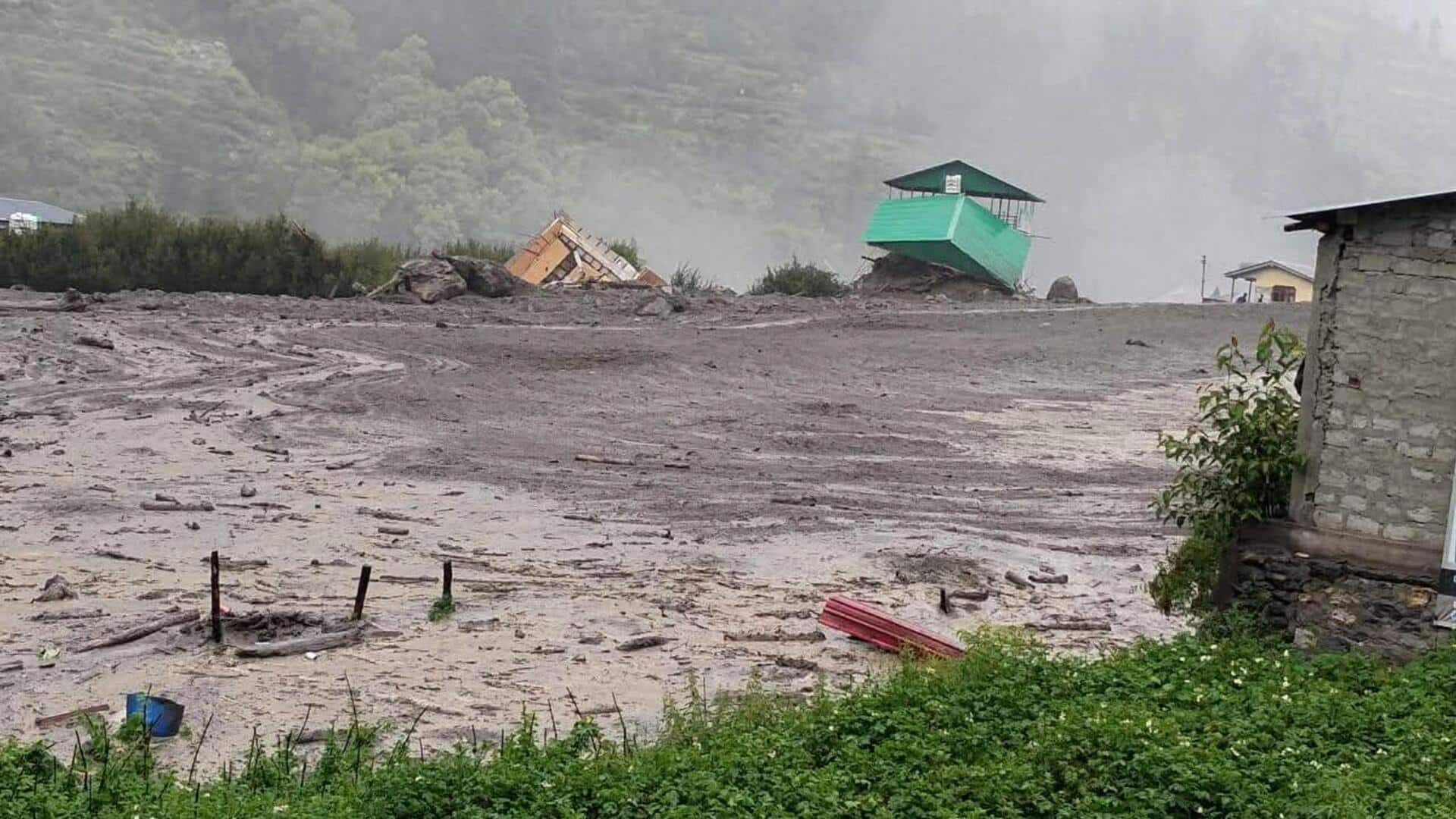
Uttarkashi floods: 43 people, including 9 Army personnel still missing
What's the story
Nearly a week after devastating flash floods hit Dharali on August 5, officials have confirmed that 43 people remain missing. The list of the missing includes nine Army personnel. Garhwal Commissioner Vinay Shankar Pandey said locating those trapped under debris is the administration's top priority. A joint team of National Disaster Response Force (NDRF), State Disaster Response Force (SDRF), Indo-Tibetan Border Police (ITBP), and geologists are working in the disaster zone.
Missing persons
List of missing people
Among the missing are nine Army personnel, eight locals of Dharali, five residents of nearby villages and others from Tehri, Bihar, Uttar Pradesh, and Nepal. Contact has been re-established with five of the 29 missing Nepali workers but the rest remain unaccounted for. So far, two bodies have been recovered from the disaster site.
Weather warning
IMD warns of heavy rainfall till August 15
The India Meteorological Department has predicted "heavy to very heavy" rainfall in Uttarkashi and nearby districts till August 15. This could lead to fresh landslides and flooding, further complicating search and relief operations. Helicopter operations were suspended on Monday morning due to poor visibility caused by light to moderate rain across parts of Uttarkashi.
Infrastructure restoration
Road repair work progressing slowly due to bad weather
Road repair work is progressing slowly due to bad weather. A bailey bridge at Limchagaad has been completed, restoring an important link between affected areas. Heavy machinery is also being used on the damaged stretch between Dabrani and Sonagad. However, during one operation, a Pokland machine slipped into the swollen Bhagirathi river while clearing debris for road reconstruction. The driver was reportedly swept away by the gushing waters and remains missing.
Hidden risks
Authorities warn of hidden dangers below surface
Authorities have also warned of possible hidden dangers below the surface. A stream from Kheer Gad, buried under debris up to 50 feet deep, could still be flowing beneath the rubble. This poses a risk of softening the ground into marsh, making excavation treacherous. Inspector General SDRF and nodal officer Arun Mohan Joshi said, "The mouth of the stream is clogged with rubble, and water may be running underneath, making the soil unstable."